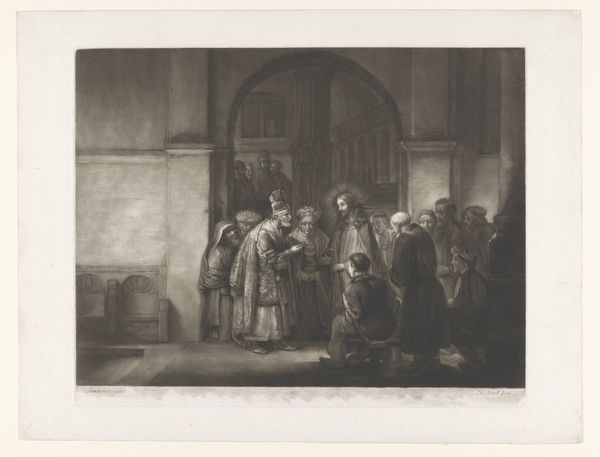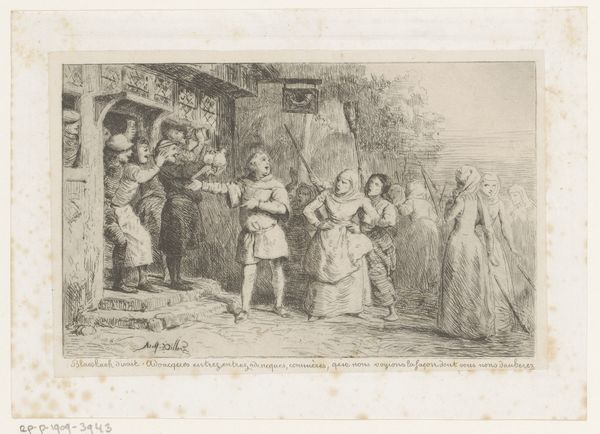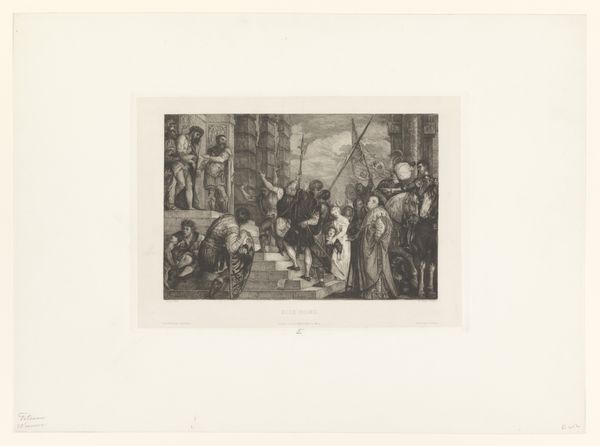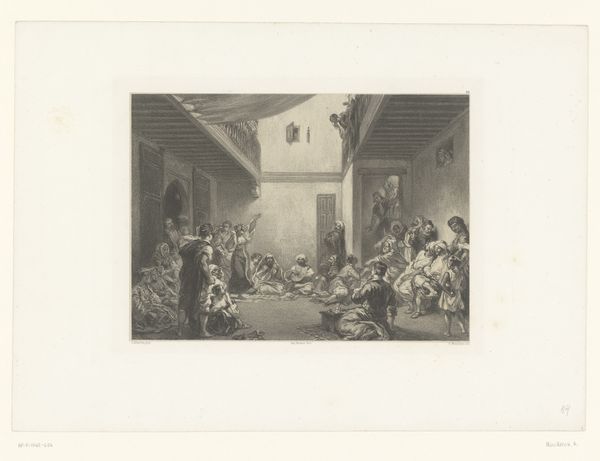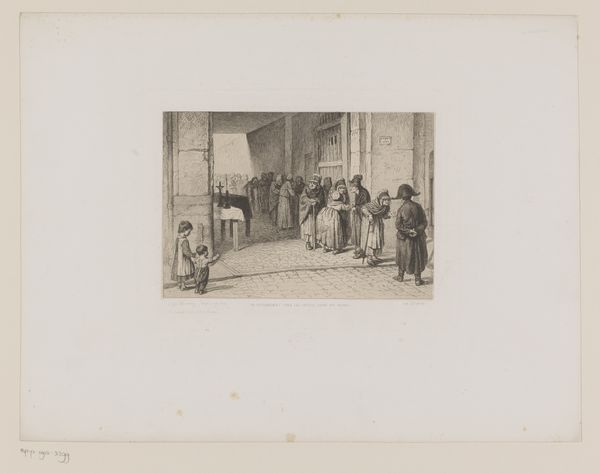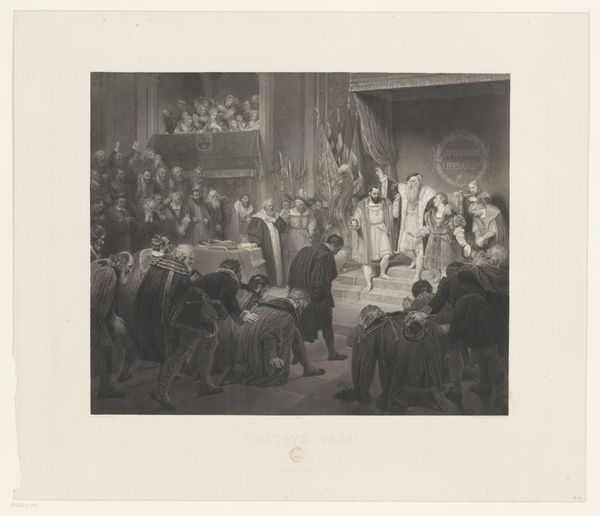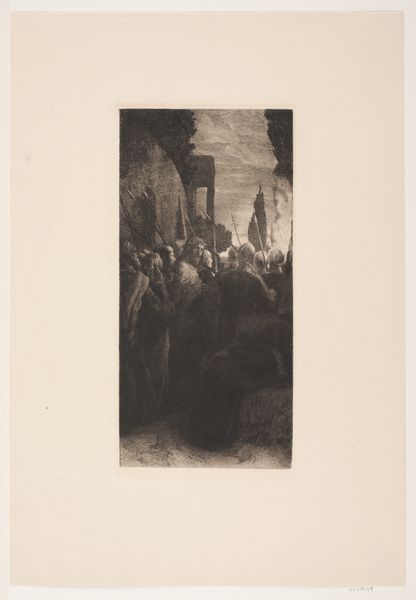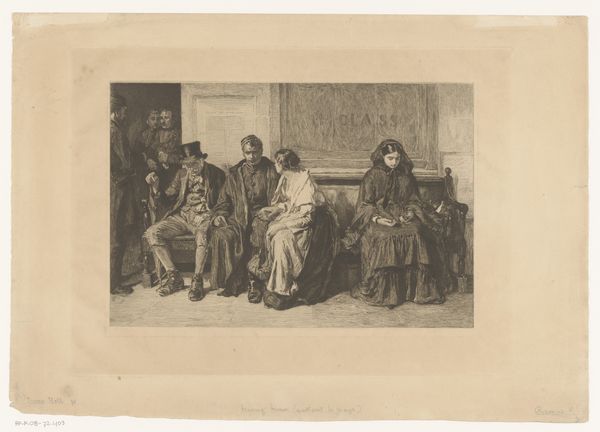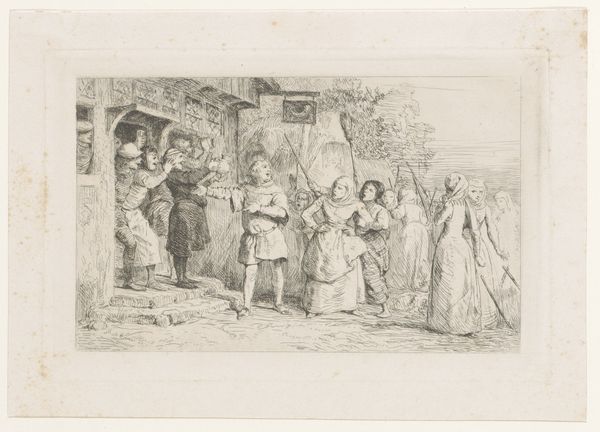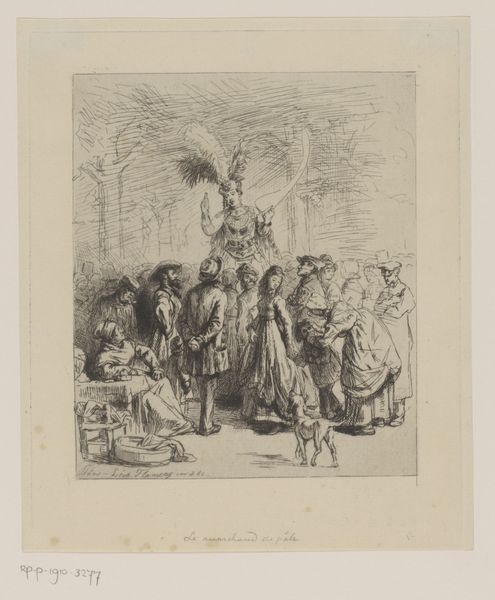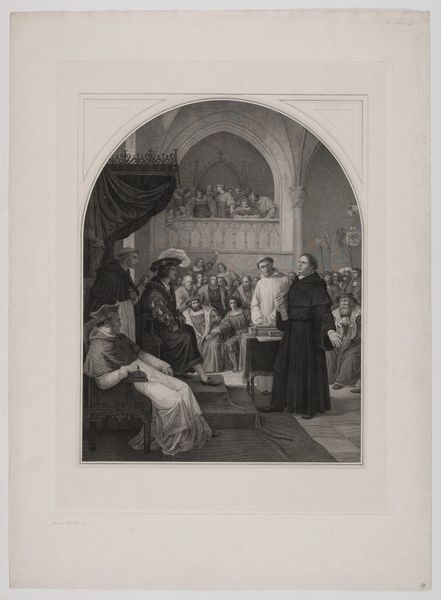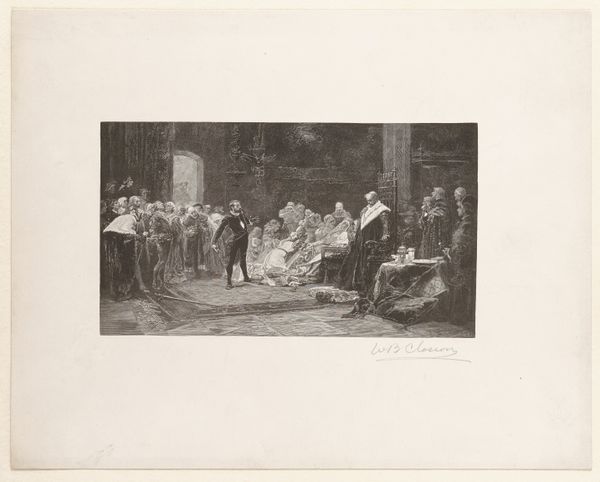
Dimensions: height 417 mm, width 534 mm
Copyright: Rijks Museum: Open Domain
Curator: Today we’re examining “Die Klostersuppe” or “Monastery Soup,” an etching created by Ferdinand Schmutzer sometime between 1880 and 1907. Editor: It’s stark, isn’t it? Bleak even. The heavy shadows combined with the pallid tones give the whole scene a somber feel. I see a crowd, mostly shrouded figures, gathered at what appears to be a doorway. Curator: Precisely. Schmutzer captures a social reality here, likely depicting the distribution of food to the poor outside a monastery. It’s a commentary, I think, on the societal structures that create such dependency and the role of the Church within that. Editor: Yes, there's an implicit power dynamic in images like this that we can’t ignore. Who holds the power? Who relies on charity? I am struck by how many are women and children. Does the soup become symbolic, then, of survival and the uneven burdens of that survival? Curator: I think that's astute. Social Realism was deeply invested in conveying the everyday realities of working-class lives, particularly their struggles. Notice the architecture itself. The building almost looms over the figures, its ornate detailing a stark contrast to their plain, dark clothing. It’s a visible representation of institutional power. Editor: And the composition too! Schmutzer utilizes this broad, almost empty foreground, focusing all that action, that desperate communal gathering, back in the space near the door. I am forced to linger on that disparity between dark empty space, and their filled, albeit impoverished experience. What does that placement tell me? Curator: Possibly it reflects the physical and societal distance between the viewer, us perhaps, and those depicted, those dependent on "soup." By employing the printmaking technique, Schmutzer broadened accessibility too, creating this piece to reach an even wider audience than he could reach via painting. Editor: I like to consider works like this for what they communicate beyond face value, beyond “mere” representation. Schmutzer uses imagery, this single moment captured and endlessly replicated, to encourage dialogue, and make legible the power structures of his world. Curator: A dialogue we, even now, continue.
Comments
No comments
Be the first to comment and join the conversation on the ultimate creative platform.

